I have passed by Reading many times when heading for the Chiltern Valley or the beautiful villages dotted alongside the Thames. I didn’t know anything about Reading until I visited last week, when I discovered that as well as there being so many interesting things to do in Reading, there is great food and plenty of history.

I was surprised to learn that despite its size and population, Reading is a town, not a city. I found out during my trip to Reading that in order to become a city, a town must obtain a Royal Charter, which is only granted if it has a Cathedral. Reading does not have a Cathedral, but it did have an impressive Abbey, which is why it never gained city status. However, this does make Reading the largest town in England. Walking along the streets of Reading I noticed the mix of medieval walls and churches, and the glass buildings of modern architecture. It was like walking in the City of London, spotting hidden gems among skyscrapers. Not that there are skyscrapers in Reading, but it had the same feeling.
How to get to Reading from London
If you are planning a day trip from London, you can easily reach Reading in just 25 minutes by train from Paddington Station. From the middle of next year you will also be able to get to Reading by London’s new Crossrail project, the Elizabeth Line, which will cross the capital from East to West.
The train station is located extremely central and you virtually get off the train and step into the old town.
Reading and the Three B’s

Reading is known as the town of the three B’s because in the 19th century, the largest industries here were producing beer, bricks and biscuits.
Reading is known for its beautiful red brick architecture which was predominant in the 19th century. Today you can admire it in the old town. The “Reading bricks” were made by S & E Collier, the largest brickmaker in town. They operated from 1870 until 1966 and besides bricks, they also produced pottery in the form of Roman and Greek medieval pots. It was marketed as “Silchester Ware”, after the nearby Roman village abandoned sometime during the 14th century.
When it comes to the second B, beer, Reading was famous due to the Simonds Brewery, which was opened in 1785 and operated until 2010. By 1805 the brewery already owned 10 pubs. As the years passed, more pubs were opened. The brewery expanded and remained a family business until 1960, when it was bought by Courage.

The biggest B comes from biscuits, which had a long and prosperous history in Reading. The company started as a small bakery on London Street and became Huntley & Palmers when Joseph Huntley and George Palmer started a partnership in 1841. By 1911 the company had over 88,000 employees and was famous all over the country. Huntley & Palmers was the creator of many of the biscuit flavours that we know today, such as the ginger snaps or the Nice biscuits. They exported the biscuits all over the world, using beautiful tins as their marketing tool. In fact, you will probably find an old tin of Huntley & Palmers biscuits in every country around the globe.
Huntley & Palmers closed the Reading factory in 1976 and the brand was sold to Danone in 1989.
Visit the Abbey Quarter
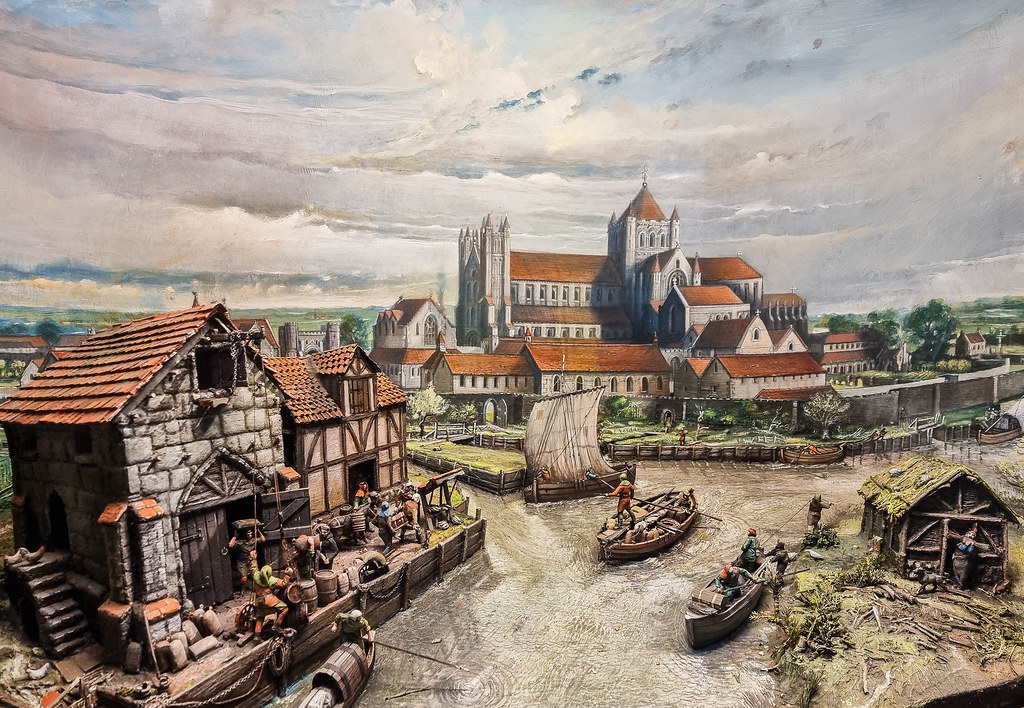
This year the town celebrated the 900 year anniversary of the foundation of Reading Abbey by Henry I between the Kennet and Thames rivers. He didn’t get a chance to see it, as he died one year before it was finished.
After its inauguration in 1164, the Abbey became one of the largest royal monasteries in Europe and the fourth-longest church in England. Its glory didn’t last for a long time though, as after 400 years Henry VIII reformed the English church and dissolved the churches and monasteries. The act of dissolution of the monasteries resulted in their wealth and property being seized.

Photo credit: Reading Museum
The last abbot, Hugh Faringdon was executed for treason, for refusing to surrender the Abbey to the king. After his death, the Abbey was taken and gradually dismantled. Today you can see some remains all over Reading.
Except for some walls, not much is left of the old Abbey. The size of the walls gives an idea of how big the Abbey used to be.
The Abbey Gateway

Once the private quarters from the public areas of the Abbey were divided, the Gateway had several purposes over the years after the dissolution of the monasteries. First, Queen Elizabeth I transformed it into her own royal palace. After her death, the building was left in disrepair until the 18th century, when it was repurposed as a school for girls. One of the famous pupils who studied here was Jane Austin.
If you look around the Abbey Gateway you can see the history of the building, remembered in sculptures. The latest sculpture added and inaugurated a few years ago represents Hugh Faringdon, the last abbot of Reading Abbey.
King Henry I
A few years ago, the remains of Richard III were found under a car park in Leicester, leaving Henry I the last significant king of England whose burial site is still unknown. It is known that his body was brought from France, where he died, to England, and he was buried in the Abbey in front of the altar. But, as the Abbey is almost completely destroyed, where exactly his tomb is remains a mystery.
St James Pilgrim Route

In the Middle Ages Reading used to be an important site on the pilgrimage route to Santiago, because the Abbey had the relic of the hand of St James. Pilgrims used to come to Reading and stay at the Hospitium of St John, which is now a nursery, but which you can still recognise from the outside. They would then continue their way towards Southampton and take a ship to Galicia in the north of Spain, where they would walk further until they reached Santiago de Compostella. Soon the town of Reading will be launching a collaboration with Galicia, giving the opportunity for pilgrims to follow the St James Route again.
The Christmas Trail

During December, the Abbey Ruins and Forbury Gardens get festive with the Twilight Trail. This lightning installation celebrates the town’s biscuit heritage, and it is aimed to both residents and visitors. The trail is family friendly and accessible, and it has been created by light art pioneers, Luminism.
Check Out the Greyfriars Church

Photo credit: Reading Tourism Board
The Greyfriars Church is one of the four friary churches still standing in England and Wales. It is also the oldest Franciscan church still in use in the UK, listed as a Grade I listed building because of its extremely well preserved Franciscan architecture.
See the Only Copy of the Bayeux Tapestry
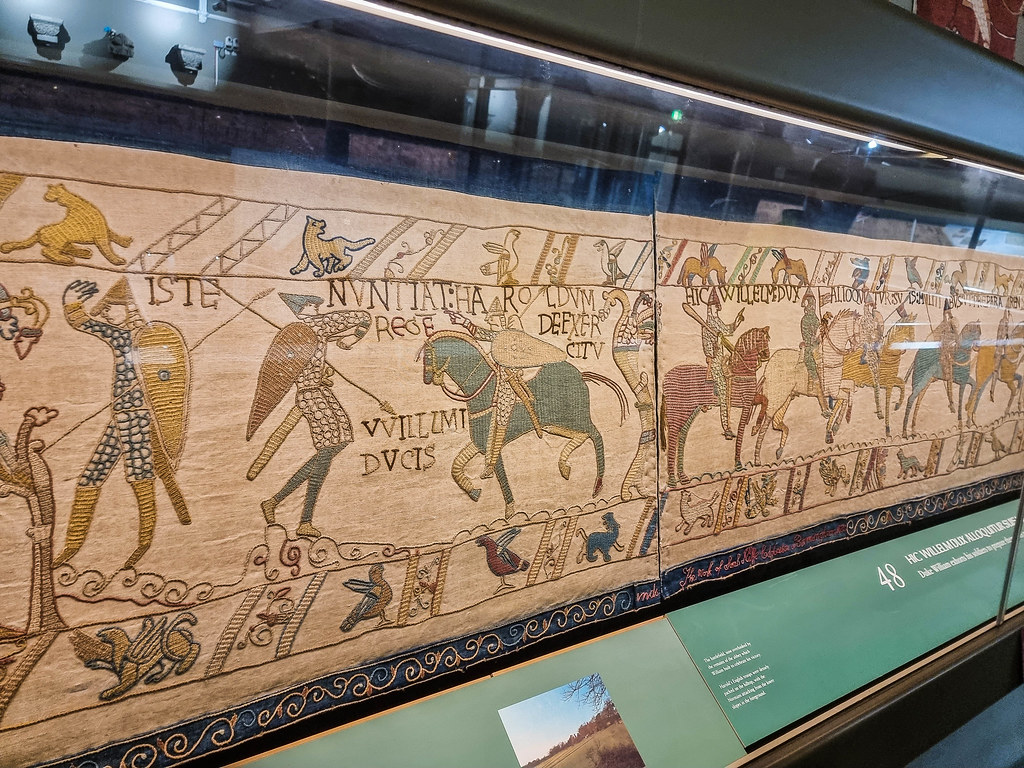
One of the best places to visit in Reading to learn more about the town’s history is the local museum, in the old Town Hall. Spread out on three different floors, the museum tells the story of the town, and it has some wonderful collections that you could spend an entire day browsing. One of them is the biscuits display, with hundreds of carefully crafted tins that were produced and exported over the years. There’s an entire hall of them.
One of the most precious pieces at Reading Museum is the only copy of the Bayeux Tapestry, a 70 meter long embroidered cloth depicting the Norman conquest of England. To be honest, I wouldn’t call this a copy but a reproduction, as it has been embroidered by hand, just like the original one. It took 35 women over a year to complete the Reading copy of the Bayeux Tapestry, using special wood dyes to match the original colours. One fun fact about this replica is that the Victorian women who embroidered it covered up a naked gentlemen’s modesty with underpants. Overall though, there are very few differences between the original and the replica displayed at the Reading Museum. So, if you don’t have plans to visit Bayeux anytime soon, come to Reading!
The museum also has paintings that show how impressive the Abbey used to be in its glory days, before Henry VIII disbanded monasteries. I highly recommend visiting the museum, because it is very hard to imagine how big the Abbey used to be when you are walking between its ruins.
Spot Oscar Wilde’s Cell at the Former Reading Gaol
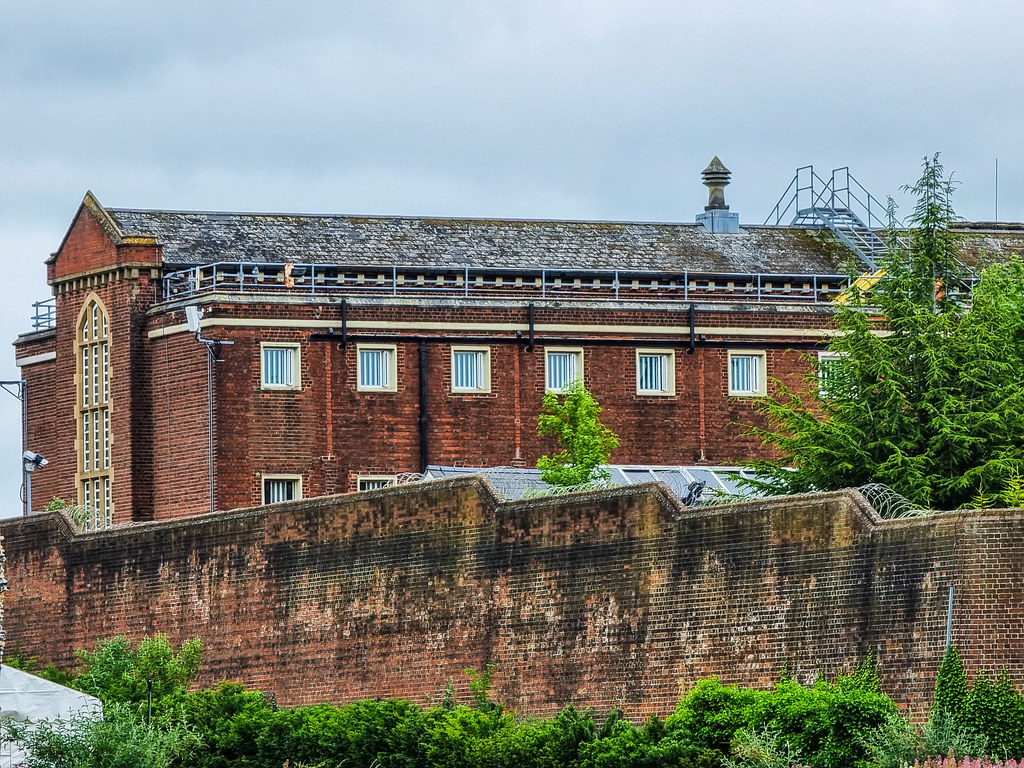
In 1895 Oscar Wilde was convicted of “gross indecency” with other men and imprisoned at Reading Gaol for two years with hard labour. Conditions at the Reading Prison in the 19th century were extremely tough, with poor sanitation and poor food, claustrophobic cells, and solitary confinement. Oscar Wild describes it best in his “De Profundis” letter written in the last four months of his sentence, to his lover, Lord Alfred Douglas.
After he was released and exiled to France, Oscar Wilde wrote one of his best poems, “The Ballad of Reading Gaol”, in 1897. Mentally exhausted and bankrupt after the two years spent in Reading, he died soon after in 1900, at 46 years old.
Find the Banksy Mural

Photo credit: Reading Tourism Board
Early this year, Reading was the latest town chosen by Banksy to display his art. The new mural appeared on the walls of the former Reading prison, and depicts an inmate escaping from his cell on a rope made from sheets, tied to a typewriter.
The locals believe that the man represents Oscar Wilde, and that the mural is an act of support of transforming the old prison into an arts centre.
Unfortunately, the mural has been vandalized, so it has been covered with a glass frame to protect it. You can still see it, but you can’t get too close.
Take a Leisure Boat Trip on the Thames

You don’t have to go to Goring or Henley on Thames to enjoy the beautiful views of the River Thames. Reading has a pretty riverfront, shared with the Thames Path. The best way to explore the views is by taking a relaxed cruise up the river, to Mapledurham Lock.
This is one of the most popular trips from Thames Rivercruise. It is a relaxed one and a half hours sail, with a fantastic commentary from the captain. He pointed out and told stories of different houses along the river front, including the one with the thatched roof that is destroyed every year by a Canadian goose who chooses to nest on it, even though it’s too heavy. The Captain also has a fantastic knowledge of the local birds, pointing out the different ones as we sailed by. During the cruise I found out that if you harm a swan that belongs to the Queen (which is about 80% of them), under the current legislation, you will be hanged in the Tower of London.

The boat I sailed on, the Caversham Princess, was big and spacious, with panoramic windows on each side, along with a bar and facilities. It had heaters too, which was perfect as the weather wasn’t too warm.
Some of the other cruises include lunch and even afternoon tea. You can check the current schedule here.
Enjoy the Lido

The Lido is a place that you must not miss on your trip to Reading. In fact, it is definitely one of my highly recommended things to do in Reading as a one-of-a-kind experience. The Lido is a restaurant and a health club, with an outdoor swimming pool. From the outside it doesn’t look much but once you step inside it’s like entering a world of colour.

Unfortunately, when I visited the pool was only open to members due to the current restrictions. However, I did enjoy their wonderful tapas bar. The food was so good! After living two years in Southern Spain, I am kind of an expert when it comes to tapas. And I have to tell you, their tapas were not only delicious but also extremely flavoursome. The taste of the Spanish tortilla made me instantly virtually travel to Spain. The sobrasada croquettes were just sublime.
Go Shopping
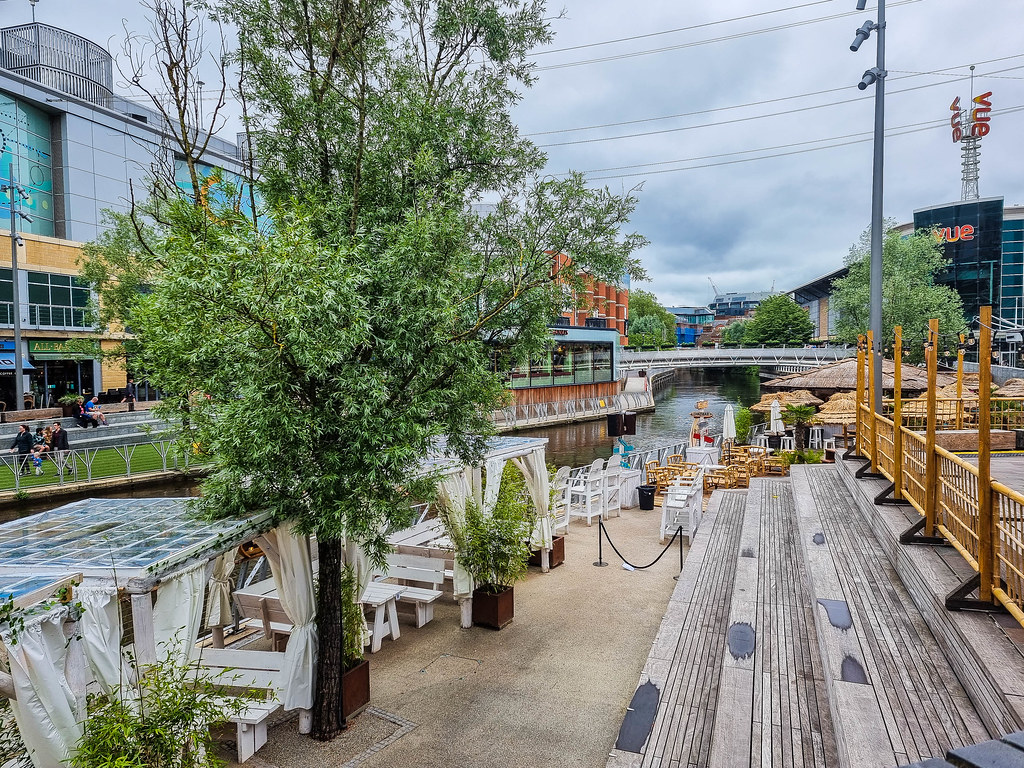
Reading makes a fantastic destination for shopping, with two malls and plenty of independent high street shops along the historic centre. You can find anything here, from high fashion (and a John Lewis shop in a Victorian building) to record stores, memorabilia, rare liquor and even a hat tailor. Of course, we will all need one if we plan a trip to nearby Ascot!
Staying the Night?

Planning to spend the night in Reading? The town has great accommodation options, for all budgets. At the moment you can book the five star The Roseate Hotel for less than £70 a night, which is a fantastic deal and makes a perfect spa break. You can check the latest rates on Booking.com and read the reviews on TripAdvisor.
For other suggestions, check below the rates provided by my trusted partner Booking.com:
Booking.comLike it? Pin it!

Disclaimer: Some of the links on this website are “affiliate links.” This means that if you click on the link and do a purchase, I will receive an affiliate commission at no extra cost for you. This helps me keep my website running and continue to share my travelling knowledge with you. I thank you for booking your flights or hotels using the links on my website. Regardless, I only recommend products or services I use personally and believe will add value to my readers.
Please note that I have visited Reading as a guest of the tourism board.

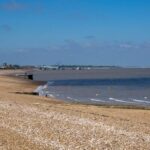


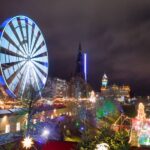
What a fascinating post with lots of history and interesting anecdotes interspersed. And so close to London and accessible by pubic transportation. The river cruise sounds very interesting with wonderful commentary. I love the connection with Oscar Wilde (and Banksy) with mixed feelings about the societal attitudes that had such devastating consequences for those who were different.
How cute is Reading?! I love a good Abbey, and how cool that there are Banksy murals there. Thanks for this roundup – will be adding Reading to my travel wishlist!
It’s funny, I’ve been through Reading station so many times but never spent any real time there exploring the place. Apart from going to a Festival once and the time I headed straight to a particular bar for a friends birthday. This post has shown that Reading is a place worth visiting!
We have never been to reading to visit but oh my, you have such a great selection of things to do and places to visit there
I never realised that Reading had so many fun activities to do and especially as its only 25 mins from London. This year we are going to staycation so doing local of Uk day trips . I will add this my list of places to visit.
I didn’t know there was a copy of The Bayeaux Tapestry in Reading, I will have to take my kids for a visit soon.
I’ve only ever been to Reading before when I used to go to Reading festival but I didn’t actually know how much there was to do there x
What a quaint-looking town! I didn’t know that tidbit about Oscar Wilde. His cell would be interesting to see. I would like to see the tapestry and the mural. Thank you for sharing!
I went to Reading years back but only went shopping and had lunch before coming back. Good to read about other things I can do if I go again. Might even stay a night that hotel is well priced.
We have driven past Reading so many times and never actually headed in to see what it has to offer. I definitely think I need to visit now – seems there are quite a few things I’d like to check out for myself.